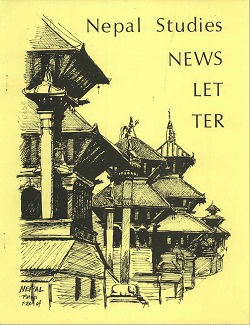Author Biography
Prashanta Khanal completed a Master’s in Environment Management from Pokhara University. He is currently working with the ADB Modernized Pedicabs Vehicles project, promoting socially sustainable transport through improving non-motorized transport. He previously worked as Program Coordinator in Clean Energy Nepal and as Country Network Coordinator in Clean Air Network Nepal. His work focuses mainly on research and policy advocacy on urban transportation, air quality management, low-carbon development and sustainable cities agendas. He worked on various projects commissioned by national and international organizations such as UN-Habitat, Clean Air Asia, World Bank, ADB, ICIMOD etc., and some government agencies.
Anobha Gurung is a postdoctoral research scientist at University of Texas at Austin, Department of Civil, Architectural, and Environmental Engineering and at the International Centre for Integrated Mountain Development, Atmospheric Initiative. She holds a Master’s in Environmental Science and Ph.D. in Environmental Health from Yale University, School of Forestry and Environmental Studies. Her research focuses on exposure assessment and human health burden associated with air pollution in growing cities in South Asia like Kathmandu, Nepal. Her research is designed to be policy-relevant, increase awareness, and contribute to well-informed decisions to protect human health.
Priyankar Bahadur Chand recently graduated from Yale University with a dual B.A. in Anthropology and Global Affairs. He is currently collaborating with the Department of Health Services in Nepal to conduct sickle cell disease research and awareness projects in the Tarai region. He is also currently working for Possible Health as a Government Partnerships Manager in Kathmandu and Achham, Nepal. His academic interests include public health, the history of medicine, and medical anthropology.
Abstract
Rapid urbanization has transformed Kathmandu Valley, Nepal, one of the fastest growing metropolitan regions in South Asia. This urbanization, in turn, is leading to considerable social, economic, and environmental stress. The region has seen unplanned growth despite continued planning exercises. In 2011, in response to the rapid urbanization then Prime Minster Baburam Bhattarai initiated road expansion throughout the city to reduce traffic congestion. By mid 2015, it was clear that the road expansion induced greater demand leading to further traffic congestion rather than alleviating the problem. Today, non-motorized (pedestrians and bicycle) road users are more unsafe on the roads than ever before, and the plight of public transport users has remained the same. Traffic congestion has become a more serious problem. Air pollution associated with road construction and an increasing number of vehicles has turned the Kathmandu Valley into a dust bowl with potential for serious human health consequences. Along with road expansion, the government’s inability to regulate land use has contributed to Kathmandu’s current urban sprawl. Road expansion done without proper planning has threatened traditional settlements, many with heritage sites, and led to loss of public spaces and temple courtyards to make space for increasing demand for parking. Another major landscape change has been the building of concrete embankments and exclusive motor roads along the river corridors. The road expansion campaign is still ongoing and is a top priority of the government’s efforts to reduce congestion and improve urban transportation. It is high time the government of Nepal rethinks its vehicle-centric urban transport policy and adopts policy where mobility of people is prioritized. Urban transport planning should work to build a more equitable and inclusive city while addressing accessibility, safety, and environmental health risks of its growing urban population. Today, non-motorized users (pedestrians and bicycle users) are unsafe on the roads than ever before, and the plight of public transport users has remained the same. Road expansion has led to destruction of traditional settlements many with heritage sites and loss of public spaces and temple courtyards to make space for increasing parking demand. Another major landscape change has been the building of concrete embankments and exclusive motor roads along the river corridors. Air pollution associated with road construction and increasing number of vehicles has turned the valley into a dust bowl with potential for serious human health consequences. Along with the road expansion, the government’s inability to regulate proper landuse has contributed to Kathmandu’s current urban sprawl. The road expansion drive is still ongoing and is still the priority for government’s urban transportation initiatives within the Valley. It is high time the government of Nepal rethinks its vehicle-centric urban transport policy and adopts policy where mobility of people is prioritized. Urban transport planning should work on building more equitable and inclusive city while addressing accessibility, safety, and environmental health risk associated for its growing urban population.
Creative Commons License

This work is licensed under a Creative Commons Attribution 4.0 License.
Recommended Citation
Khanal, Prashanta; Gurung, Anobha; and Chand, Priyankar Bahadur. 2017. Road Expansion and Urban Highways: Consequences Outweigh Benefits in Kathmandu. HIMALAYA 37(1).
Available at:
https://digitalcommons.macalester.edu/himalaya/vol37/iss1/15


